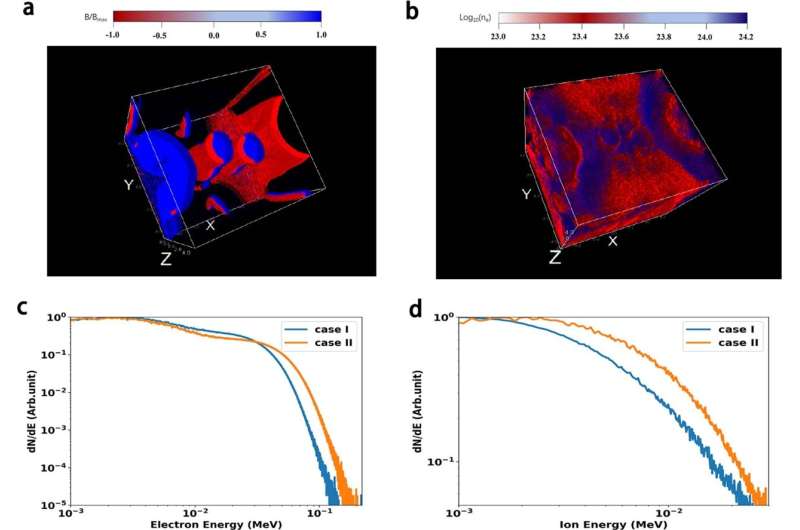January 17, 2023 report
This article has been reviewed according to Science X's editorial process and policies. Editors have highlighted the following attributes while ensuring the content's credibility:
fact-checked
peer-reviewed publication
trusted source
proofread
Measuring electrons from magnetically driven reconnection using lasers and aluminum foil

A team of researchers affiliated with multiple institutions in China, working at the Shanghai National Laboratory of High-Power Laser Physics, has conducted measurements of accelerating electrons from a magnetically driven reconnection using lasers and aluminum foil. In their paper published in the journal Nature Physics, the group describes how their work could help better understand solar flares.
Giovanni Lapenta with the University of Leuven, has published a New & Views piece in the same journal issue outlining both the work done by the team in China and work done by another international team working at the OMEGA Extended Performance facility at the Laboratory for Laser Energetics at the University of Rochester who also published their work in Nature Physics.
Prior research has shown that solar flares can disrupt electronic systems on Earth. That has led scientists to engage in efforts to better understand their origin and to possibly predict them so that those managing electrical systems can prepare for them. In this new effort, the researchers focused their efforts on magnetic reconnection, in which two magnetic fields collide, and in the case of the sun, release massive amounts of radiation into space that are seen from Earth as solar flares.
Rather than attempt to study such events directly, as has been done by other researchers, this team sought to recreate the process on a smaller scale in a lab environment. They suggest that recreating events in their lab via simulations allows for building more reliable models that can be used to predict events better than models based purely on observation.
Their work built on experiments they conducted 10 years ago to simulate magnetic explosions on the surface of the sun. This time around, the researchers used four high-powered lasers to excite a piece of aluminum foil, which resulted in the generation of plasma bubbles. As the plasma bubbles grew in size, they collided with one another, producing magnetic reconnection that the researchers were able to measure. The experiments allowed the researchers to track the energy levels in the plasma and the pace at which they accelerated. They expect such data could prove useful in determining both components on the surface of the sun as flares arise.
More information: Yongli Ping et al, Turbulent magnetic reconnection generated by intense lasers, Nature Physics (2023). DOI: 10.1038/s41567-022-01855-x
Giovanni Lapenta, Power to the particles, Nature Physics (2023). DOI: 10.1038/s41567-022-01864-w
Journal information: Nature Physics
© 2023 Science X Network





















